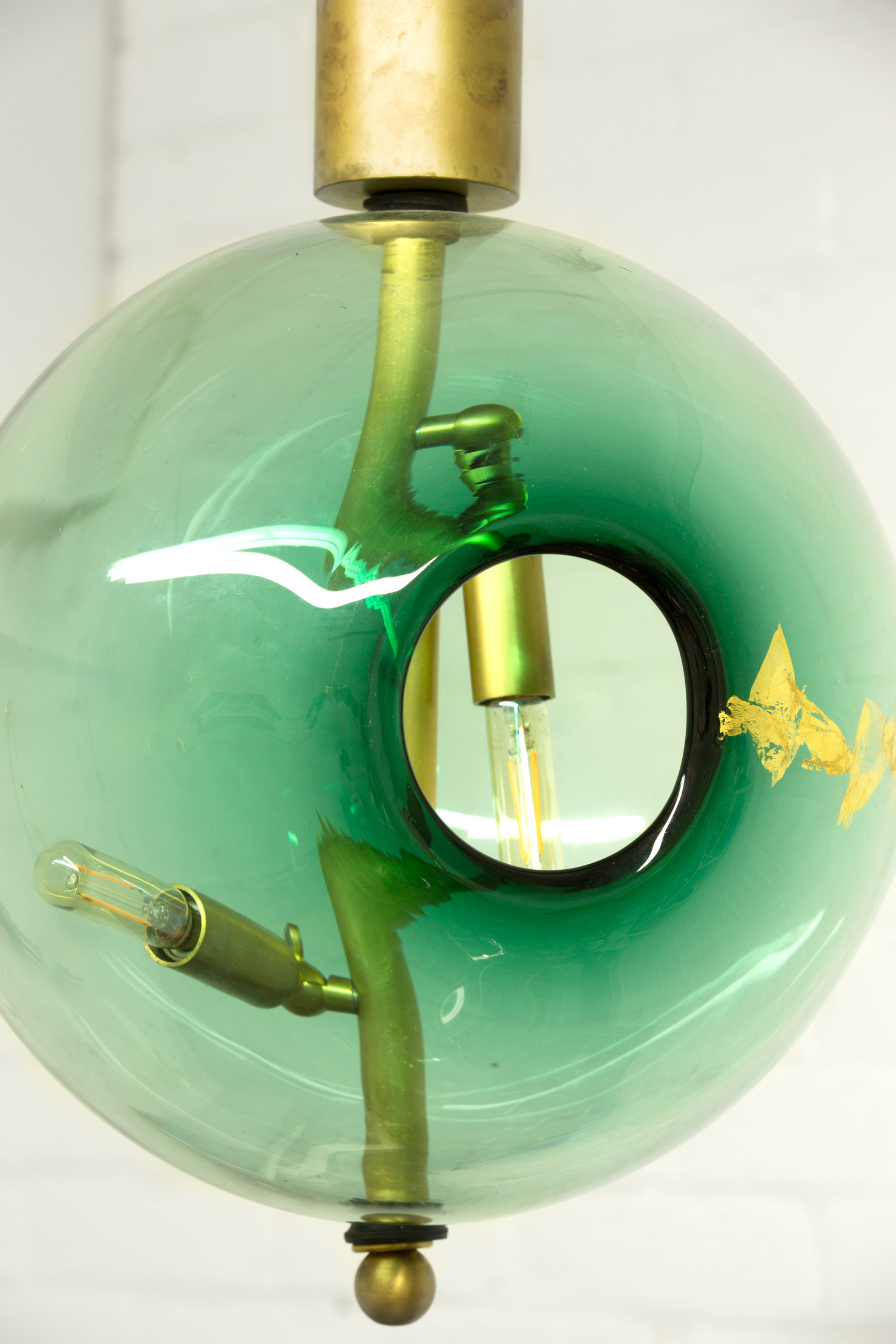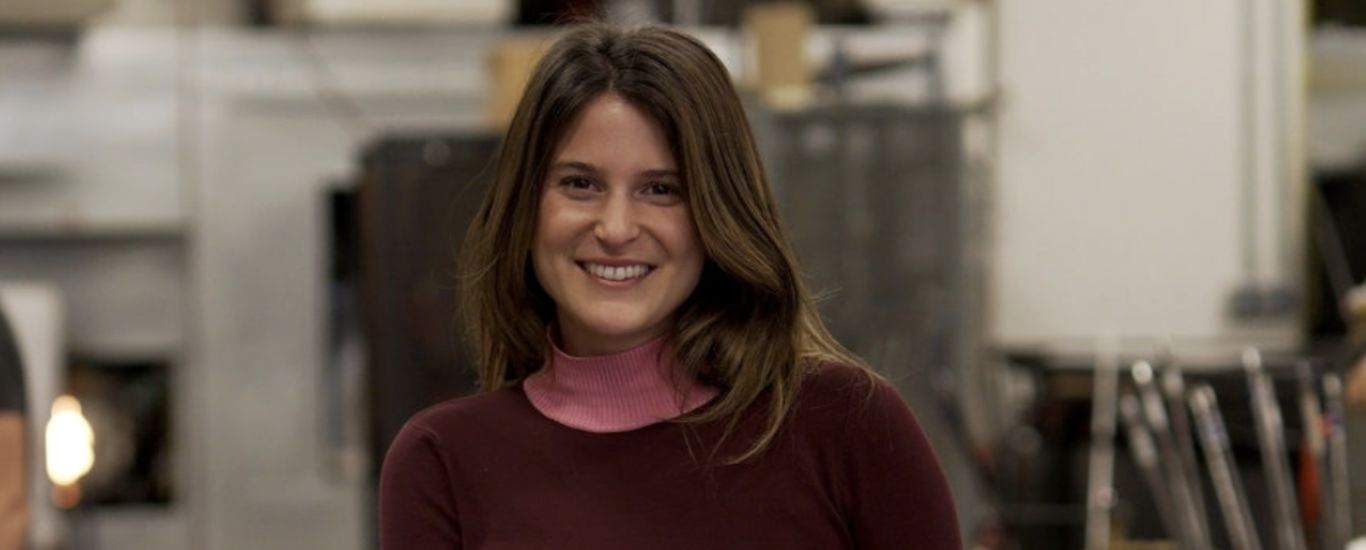Interview by Berk İlhan
We came together with Feyza Köksal Kemahlıoğlu on 1 March 2020, in a cold –but not that cold– Sunday morning in New York City. Feyza, can you tell us a bit about yourself?
Of course. I was born and raised in Istanbul, studied at The Koç School. Ever since I was a child I have been interested in paintings, sculptures, and art in general. My mom and grandma had an art gallery, so I can say that I grew around art.
I came here [the United States] in 2007 in order to study architecture at Carnegie Mellon University. Then I moved to New York City and started working at an architecture firm. After working there for a year I did my master’s in Columbia on Urban Design. Then I worked at another architectural office and had to quit to issues regarding my visa.
I was contemplating on returning to Turkey at the time, but I was also interested in starting up my own business. I realised that I wanted to stay in New York and do my own work here. I founded FEYZ Studio in 2015. It has become a company that focuses more on little products, lighting equipment, furniture and home décor rather than architecture. I have been developing the company for five years.

We did not know each other before this interview, but I was following you on social media. I was interested in how unique, fun, and elegant your designs were. I believe they genuinely bring joy. You’re also quite productive and I think you have an energy that comes from loving what you do which even reflects onto your social media presence. I really wanted to meet you as a designer myself, and this was a really nice opportunity for me.
Thank you. Creating something with my own hands makes me so happy. That’s been the case ever since I was a child. I loved doing stuff on my own, producing something with different materials. There were certain times in which I became somewhat distanced from all these. Now I really enjoy focusing on it. I have fun, I want my designs to bring people joy.
There was a particular post which featured ice cream inside a cut vase design of yours. I remember thinking, “I wish I had a vase in my house which had ice cream running through at all times.”
You’d be over 100 kilos though. (laughs)
I see those vases as pieces of candy. I believe each has a different feel to it. For instance the blue one reminds me of the Aegean Sea. You know how the sea seems silvery when the sun beats down on it? It reminds me of that, maybe because throughout the whole year I dream about going to Bodrum for the summer. Another example is amber; it evokes fire.
The shadows they cast are quite nice as well.
I initially wanted to produce them as lighting equipment since they have different types of flicker when they are moved or light is shed onto them. These equipments would work as installations, but would be of no use in our homes. That’s why I turned them into vases and they are now being sold at Bergdorf.
Bergdorf Goodman is one of the most luxurious, elegant stores of the US. It is a huge accomplishment to get in there as a designer, so congratulations. How are the sales going and how is your relationship with them?
I really like working with them. There are some new products in my mind, I can show them and get feedback even during the design stage. There is a good collaboration between us. For instance they have certain ideas, certain colours for their spring collection. Starting off from their briefs I will do some reflecting vase designs, try to develop my home products catalogue. My aim is to find a way to create new products and put out a more comprehensive collection.
I will also be featured in Neiman Marcus later this month. This will be really good for me because it means that my products will be sold all over the US. It was a nice and big step in my five-year career, I realised that I had really improved.
My company is in fact developing in two separate directions. One is the vases we talked about, they are being sold in big stores as home décor products. At the same time there are a lot of projects in which I collaborate with architects, mostly on lighting and furniture.
I used to participate in fairs when I first founded the company. There I met a lot of interior designers and began by creating special products for them. There was one in particular called Lean Light, which was a glass lamp which could be leaned on the wall. I was inspired by The Basilica Cistern, one of my favourite places in Istanbul. Every column there are different from one another. Some have been worn out from the water, one has Medusa’s head, and another has eyes on it. Even though it has become too popular with tourists nowadays, it is a dazzling place for me. While producing this lamp I put gold on the glass while it is still hot, and the gold forms a different map for each. I shape them as if I’m painting. Here I was inspired by an architectural element. Architects have started to trust me as a result, and asked me to design chandeliers or wall lamps for them. I enjoy being commissioned special projects because I get to design something new for different clients. It’s challenging, yet it helps me to develop my portfolio. It also saves me from constantly doing the same things at the beginning of my career, which would be rather dull.
Philadelphia-based Waxler Gallery got in touch last year and said they wanted to represent me. At the time I had an idea for a meerschaum lamp collection, but I had not begun production yet. I showed them my products and they were really interested in my idea. I had a single piece of meerschaum which I had bought from the Grand Bazaar. They thought it was a novel material, it is indeed an ancient material full of potential. They said they would be attending Salon Art + Design in November, and asked me to design a collection. Even though I had nothing except an idea they decided to trust me. I started working hard and created a lamp collection called Pillars of Meerschaum.
How do those moments of working hard come to life? Can you take us through your working practices?
I start by writing a story, which is the first thing I need to ascertain. Thinking about where I draw my inspiration from, how I would present it begins with writing. Then I start drawing; since I grew up by drawing, it is already the easiest way of expressing myself. I used to use watercolour and do collages while studying at the university, so I turn the paintings into collages. The final phase is entering the glass atelier to start testing.
The meerschaum has a certain size, certain limits, which determine how the design shapes up. A rather small piece can be extracted from the ground. I thought of meerschaums as bracelets interlaced into one another, thus I lengthened them. I also bored holes in them and let LED light pass through. These long, white pieces with patterns created a sense of a bamboo forest. I had recently visited Japan and was quite impressed by the thought of passing through the immense bamboos.
After the first exhibition I started to adapt my products in accordance with the needs of my clients. I refrain from doing the same thing all over again; there are always different supplementations or removals. I see it more as creating a work of art or sculpting rather than product design.
In the History of Design course she taught at SVA, Paola Antonelli had asked as a question of how design could be separated from art. She did not seem to like the answers we tried to come up with. In the end we realised her point was that it was not easy to separate the two; they are indeed so intertwined. Your works also have a foot in art, and another in design.
I certainly cannot separate them. Perhaps I would have thought different if I had studied product design, but dealing with lighting helps me develop an artistic approach. Lighting is also something to hang on the wall; it is like an accessory, an ornament for the room.
People are looking for a personal touch, they want to see the world of the designer.
It is also affected by the fact that it is 100% hand-made. I try to design metals as special pieces as well. When you design even the smallest detail it brings up something rather authentic; nothing is fabricated.
Where is your atelier?
Most of the time I work at UrbanGlass in Brooklyn. They have young employees, most have studied glass in college and are quite talented; they also do their own work. That’s why I really enjoy working there.
For instance I have been working with my current assistant for the past five years. They always carry me forward. After all I’m not a glass artist and I have a lot to learn from their knowledge, the things they share with me and the experiments we do together. It is quite exciting to collaborate with people who do not accept things as they are and are always looking for ways to improve themselves and others.

What are some stores or brands in Turkey that inspire you?
We always visit the “Old Istanbul” with my mom every time I go to Turkey. We have certain spots in the Grand Bazaar. Mavi Köşe (Blue Corner) is one of them, it’s one of my favourite places. The owner always takes out pieces he doesn’t show anyone else and tells their stories.
I like Sanayi313 and the products they create, which are rather unique. I also like Ahmet Güneştekin’s work, and Bubi because he experiments with 3D.
I don’t think I know much about the new stores in Turkey, but I can tell you a little bit about those in New York. There are many design galleries here, which is a rather new concept for furniture and lighting even though art galleries are quite popular. There are wonderful galleries in New York such as Future Perfect and Friedman Benda. The works of the designers within those galleries are usually displayed at Design Miami/, and my biggest wish is to be featured there someday.
Social media is also a great place to discover various designers. Instagram is the place to come across new works, and that is where I spend most of time.










